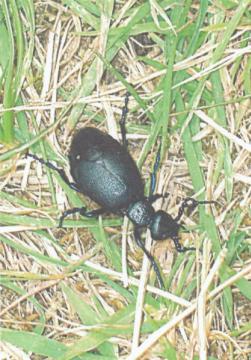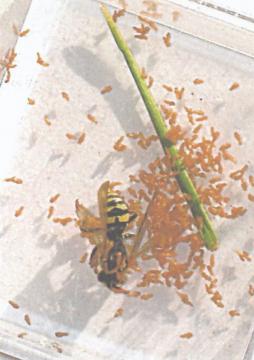After some bleak days with bitter north-easterly winds during the first two weeks of the month things have improved. First signs of spring included Adder at The Backwarden, Danbury on 5th, Bombus terrestris on 7th (Ingatestone), Peacock 13th (Ingatestone), Bombus lucorum 15th (Ingatestone Nurseries), Brimstone 16th (Bradwell), Comma 17th (Mill Green), Wheatear 19th (Blue House Farm), Small Tortiseshell & Chiffchaff 21st (Margaretting), Bombus pratorum 25th (Ingatestone), Blackcap 27th (Hitchcock Meadows, Danbury), Bombus hortorum 28th (Ingatestone), Swallow and Sandwich Tern (Southend Pier) 29th. Still no sign of Bombus pascorum, which is usually the last of the six regulars to appear round here. At Blue House there was also a Red Kite on 14th and an Osprey on 24th. Shame the hedges are still so bare and wintry. Still havn't seen Cherry Plum in bloom, let alone Blackthorn, whereas in most recent years the former has already been and gone.
Your Forum
This forum has now been more or less replaced by the Club's Facebook page at
The weblog below is for naturalists to use to report interesting sightings, ask questions, report on field meetings and generally post pictures and any information or questions generally relevant in some way to the wildlife and geology of Essex. You will need to register and be logged-on to post to the forum, and you need to upload pictures first, for use in posts. Find out more
The weblog below is for naturalists to use to report interesting sightings, ask questions, report on field meetings and generally post pictures and any information or questions generally relevant in some way to the wildlife and geology of Essex. You will need to register and be logged-on to post to the forum, and you need to upload pictures first, for use in posts. Find out more
|
Wed 24th March 2010 20:43 by Graham Smith Overwintering 22-spot Ladybirds
Blue House Farm EWT Reserve, North Fambridge : During a work party on March 23rd we came across several large gatherings of 22 Spot Ladybirds Psyllobora vigintiduopunctata overwintering at the base of rotten fence posts in TQ8797. These compliment similar discoveries last spring in TQ8696 and TQ8697. On that occasion we found them in great abundance, numbers varying between 200 and 500 per fence post and numbering many thousands in total. They were wintering at ground level or just below, pressed together either in the rotten wood or in the air spaces created by its disintegration. The Club is currently conducting a survey of common ladybirds, this species among them, and none have been recorded so far in any of these three squares; although I presume the map more accurately reflects the distribution of observers rather than the distribution of 22 Spot Ladybirds! A week later a second species of ladybird, the 14-Spot Propylea 14-punctata, was found in the same habitat, several dozen being disturbed from the base of a rotten fence post in TQ8697.
During similar work on March 22nd three Common Lizards were also found wintering at the base of rotten fence posts. Fri 19th March 2010 20:23 by Graham Smith Early Spring Migrants
Spring passage is at last getting under way. On Wednesday 17th March 4 Firecrests were seen in Othona Thicket, Bradwell St Peter's and today, Friday 19th, the first Wheatears appeared at both Holliwell Point, Dengie and Blue House Farm EWT Reserve, North Fambridge. "A lone Wheatear doth not a summer make" but it doesn't half cheer you up, especially after the kind of winter we have had! Fri 19th March 2010 20:15 by Graham Smith Oil Beetles on the Dengie Coast
Oil Beetles are fairly common along the Dengie Coast and have been recorded between Bradwell Marina (TL995078) and Burnham Wick (TQ965955). They appear in March and April and the first this year (5) were seen on March 14th at Sandbeach Outfall (TM033063). All those identified so far appear to be Black Oil Beetles Meloe proscarabaeus, which is thought to be the species depicted on one of the photographs on the picture accompanying this note. The second photo shows oil beetle larva 'mugging' a solitary bee; indeed they clung to it in such numbers that they defeated their own purpose by rendering the bee incapable of flight! The larvae are parasitic in the nests of a few species of solitary bee but according to the Buglife website they attach themselves to any such bee (more or less) which settles near them and it is pot luck whether they choose the right species! Both photos were taken by Steve Wilkinson along the Dengie Coast. The maximum recorded on any one day was 26 in April 2004 between Bradwell St Peter's (TM032082) and Marshhouse Outfall (TM033045). Tue 16th March 2010 19:40 by Mary Smith Thank you
Thank you, Graham, for reporting this most interesting and unusual observation. I know what a young Hare looks like and have seen plenty over the years but I have never seen a Harrier of any kind, let alone watched an attack. Mon 15th March 2010 20:22 by Graham Smith
Marsh Harrier versus Brown Hare
Thursday March 11th : Blue House Farm EWT Reserve, North Fambridge. An adult female Marsh Harrier was seen to attack a Brown Hare leveret this afternoon. The latter, which was around a third the size of an adult hare, seemed bemused by the assault. It made no attempt to flee but sat looking at the harrier as, with talons extended, the latter hovered above it and several times attempted to pounce on its head. It was only when the harrier tried to grab it by the ears that it reacted, leaping in the air towards it. A female Marsh Harrier is powerful enough to tackle an animal this size but the fact that it had been hunting all afternoon without success probably meant that there was an element of desperation behind this attack. Eventually, a couple of Carrion Crows came inadvertantly to the leveret's aid, mobbing the harrier and distracting it. Meanwhile, the hare stood close by as a spectator, seeming to be unclear as to what to do next. It was only when the harrier resumed its attack, which was again thwarted by the crows, that it appeared to snap out of its trance and skedaddle to safety. Friends have observed female hares protecting their young from harriers by leaping into the air and 'boxing' them, much as they do during courtship, so this youngster had already learned the rudiments of defensive behaviour. As far as I can ascertain most leverets are born from February onwards but this one must have been born early, perhaps having a baptism of snow in December or January. Mon 15th March 2010 13:02 by Mary Smith Buff-tailed Bumblee Queen
I have just seen and heard one of these buzzing on the S side of my home in Upminster. It is a warm sunny day (Monday 15 March), so maybe they are all coming out at once today. Sat 6th March 2010 16:36 by Graham Smith Adders out of hibernation
Friday March 5th 2010 : During a work party at The Backwarden EWT Reserve, Danbury today we recorded five Adders sunning themselves on a favoured bank; four females and a male. This is two weeks later than in 2009 and a month overdue compared with 2007 and 2008 but a welcome sign of spring nontheless. No sign of any bees or butterflies yet, though. Tue 2nd March 2010 14:37 by Adrian Knowles Bees are back!
The warm weather over the last two days seems to be having an effect. This lunchtime in the gardens of the Essex Wildlife Trust's Headquarters at Abbotts Hall Farm, Gt Wigborough, near Colchester I saw several solitary bees (Andrena bicolor and a probable A. nigroaenea) plus numerous Honeybees. The latter were enjoying the early blossom of Wintersweet Chimonanthus praecox |
Archives: May 2020Aug 2019 Jan 2019 Sep 2018 Jul 2016 Oct 2015 Jul 2015 May 2015 Apr 2015 Mar 2015 Feb 2015 Jan 2015 Dec 2014 Oct 2014 Sep 2014 Aug 2014 Jul 2014 May 2014 Apr 2014 Mar 2014 Feb 2014 Jan 2014 Dec 2013 Nov 2013 Sep 2013 Aug 2013 Jul 2013 Jun 2013 May 2013 Apr 2013 Mar 2013 Feb 2013 Jan 2013 Dec 2012 Nov 2012 Oct 2012 Sep 2012 Aug 2012 Jul 2012 Jun 2012 May 2012 Apr 2012 Mar 2012 Feb 2012 Jan 2012 Dec 2011 Nov 2011 Oct 2011 Sep 2011 Aug 2011 Jul 2011 Jun 2011 May 2011 Apr 2011 Mar 2011 Feb 2011 Jan 2011 Dec 2010 Nov 2010 Oct 2010 Sep 2010 Aug 2010 Jul 2010 Jun 2010 May 2010 Apr 2010 Mar 2010 Feb 2010 Nov 2009 Oct 2009 Aug 2009 Jul 2009 Jun 2009 May 2009 Apr 2009 Mar 2009 Feb 2009 Jan 2009 Nov 2008 Oct 2008 Sep 2008 Aug 2008 Jul 2008 Jun 2008 May 2008 Apr 2008 Mar 2008 Feb 2008 Jan 2008 Dec 2007 Nov 2007 current posts |




















